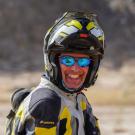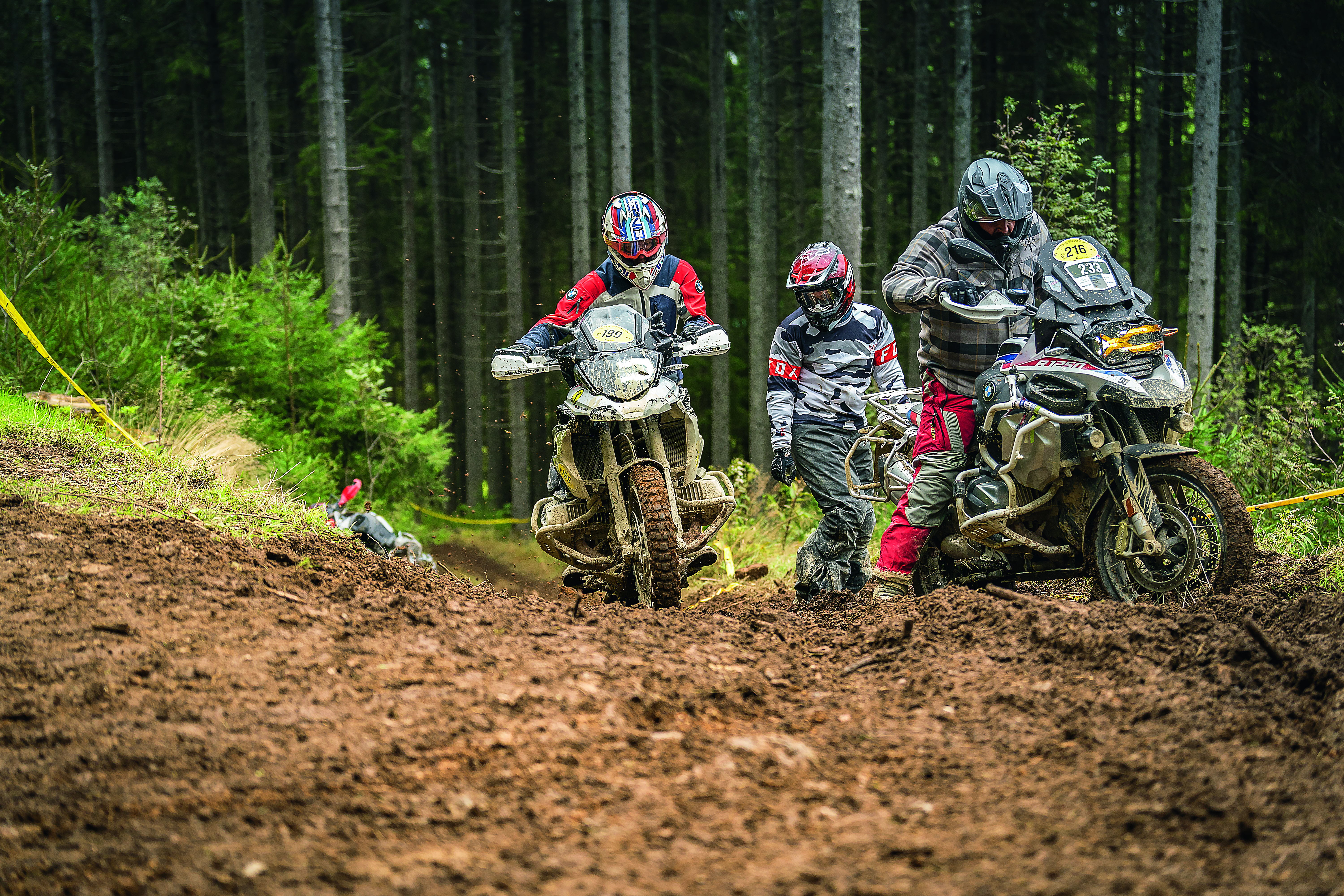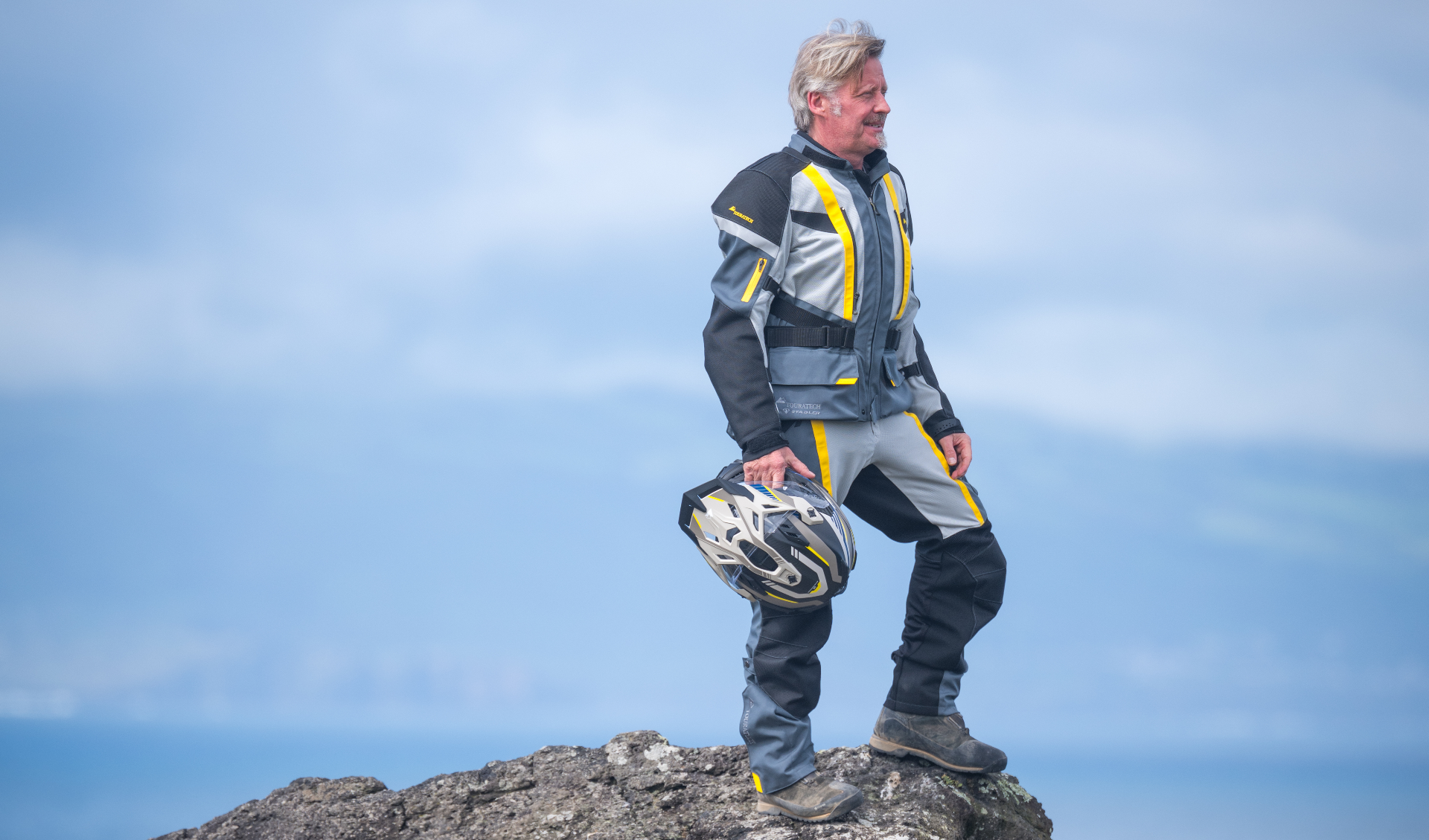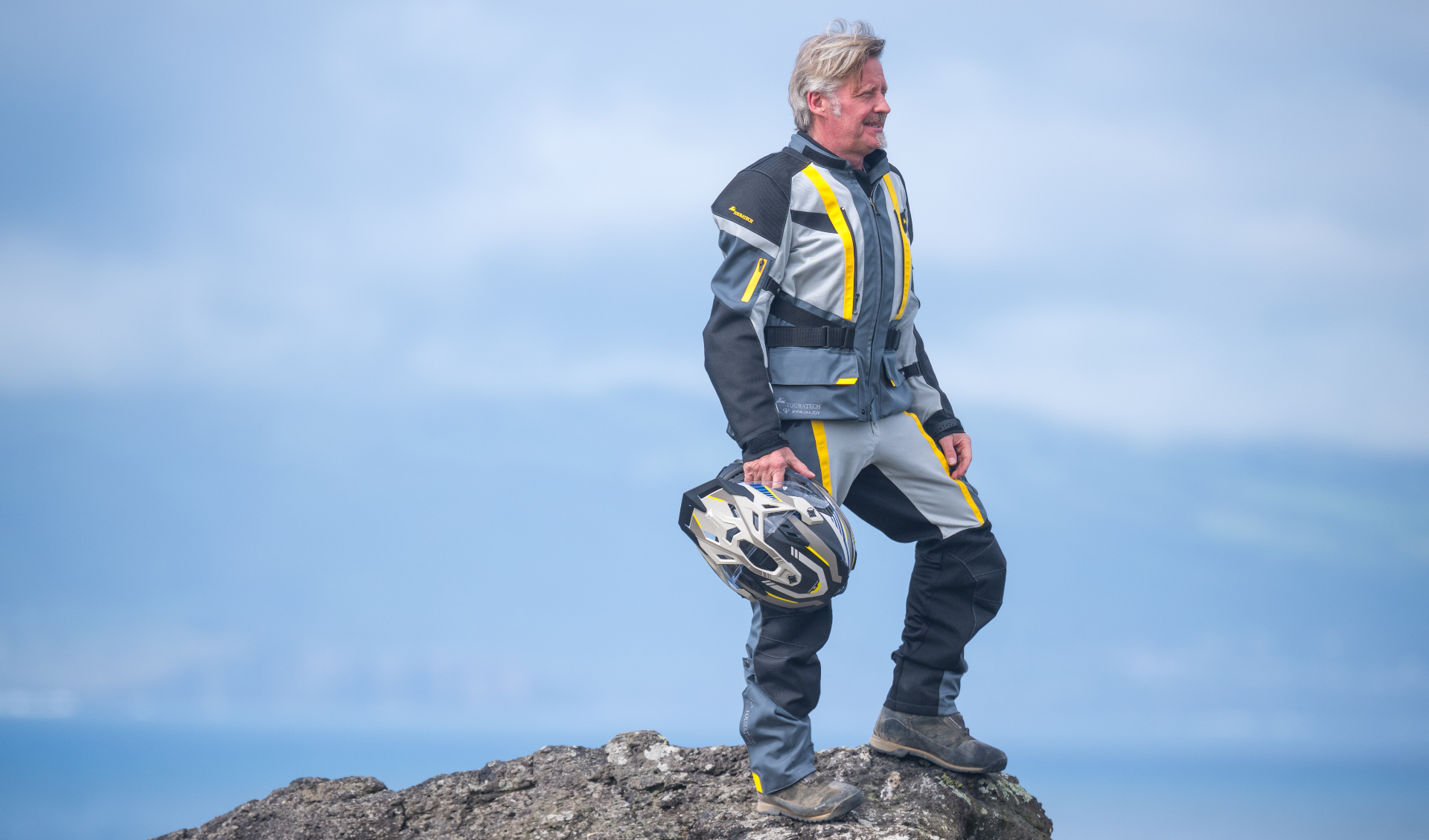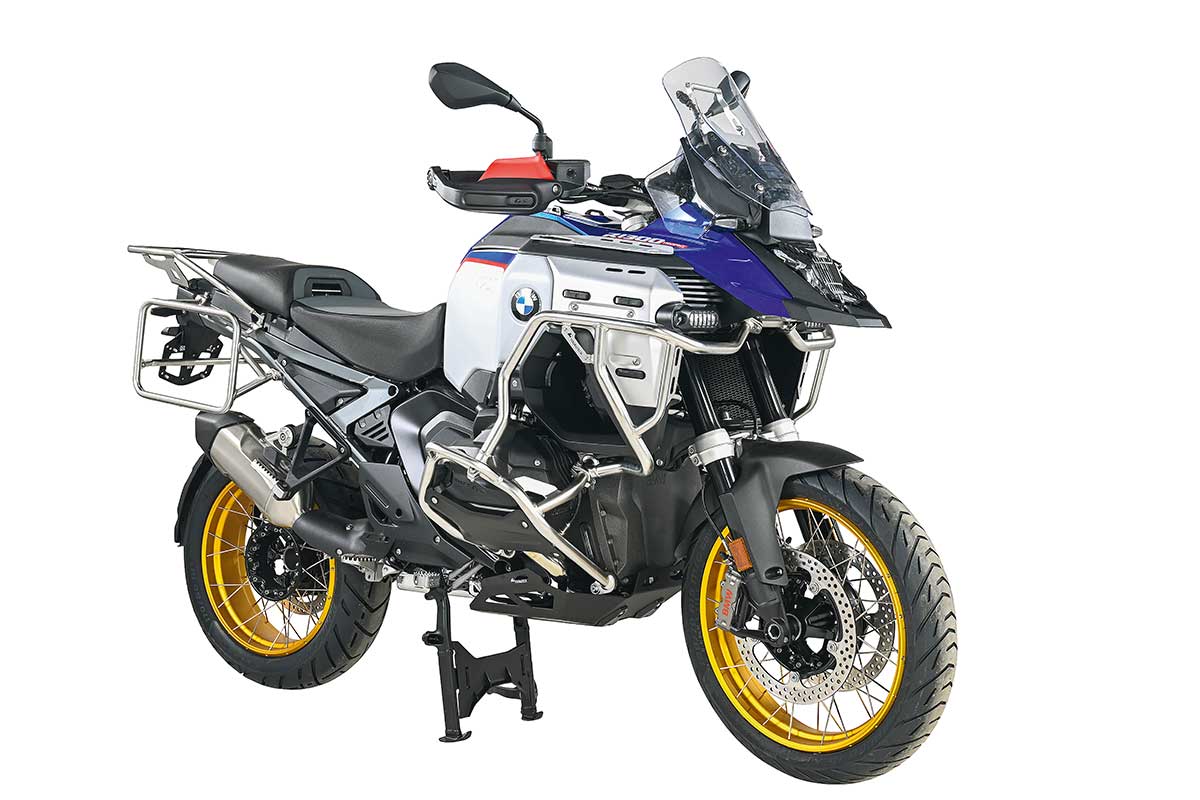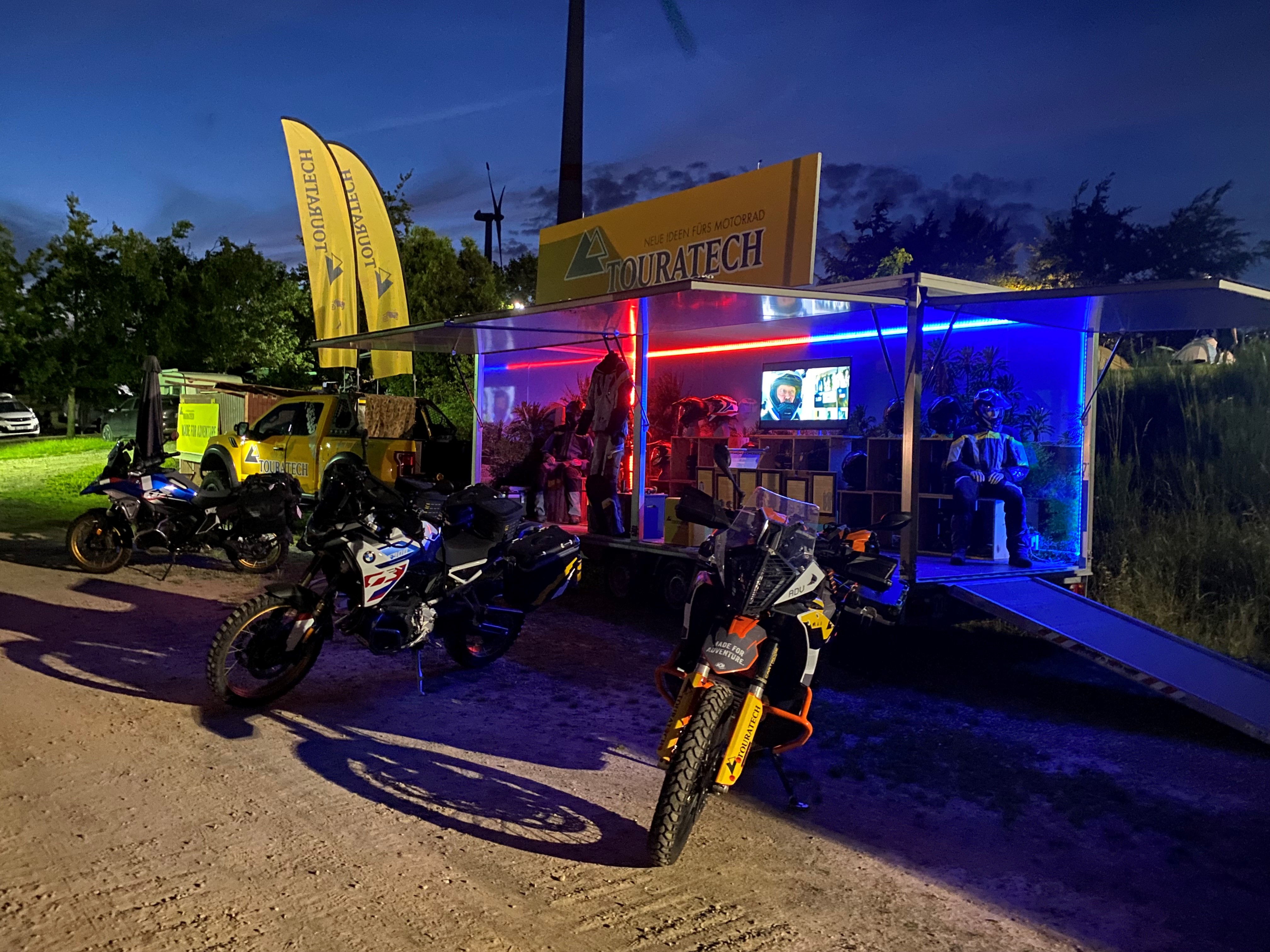Time-Less | Journey through Northern Greece
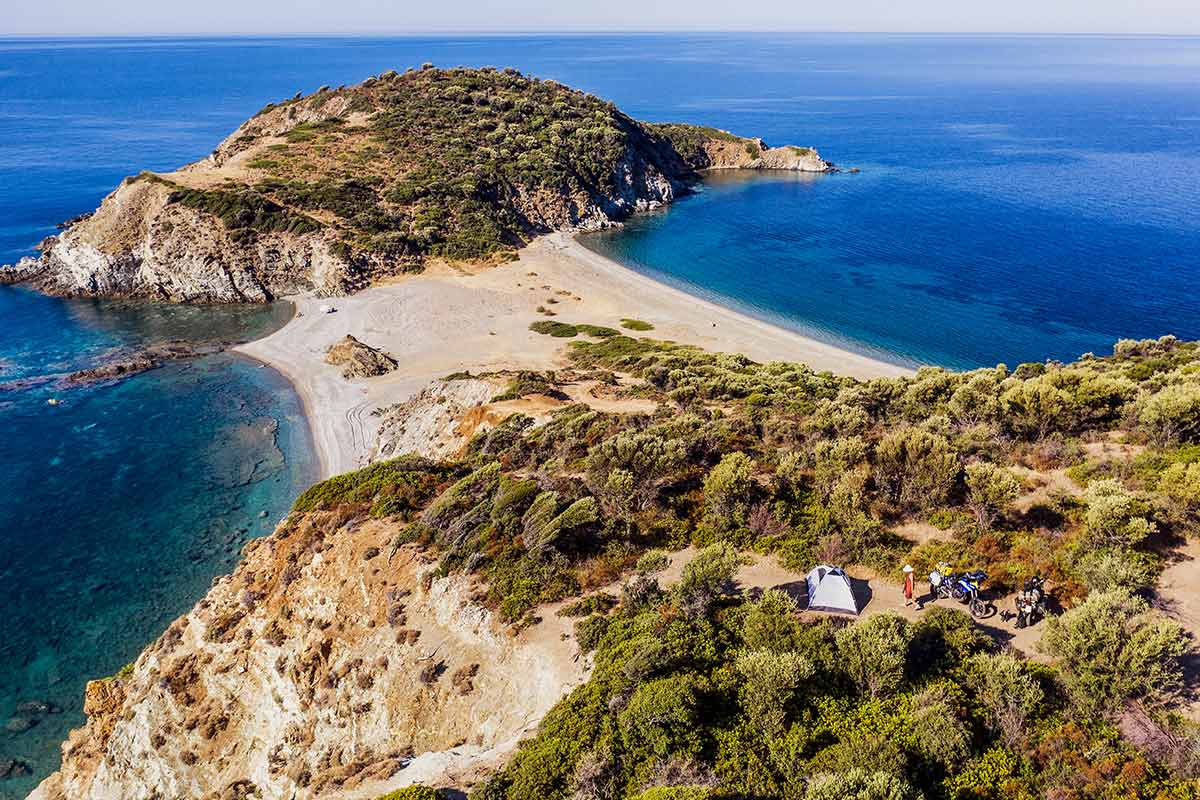
What can you experience in four weeks of holiday? Which destinations should you head for? Diana Richarz and Dirk Schäfer took their time and experienced the Greek magic beyond islands, ouzo and sirtaki. Completely relaxed.
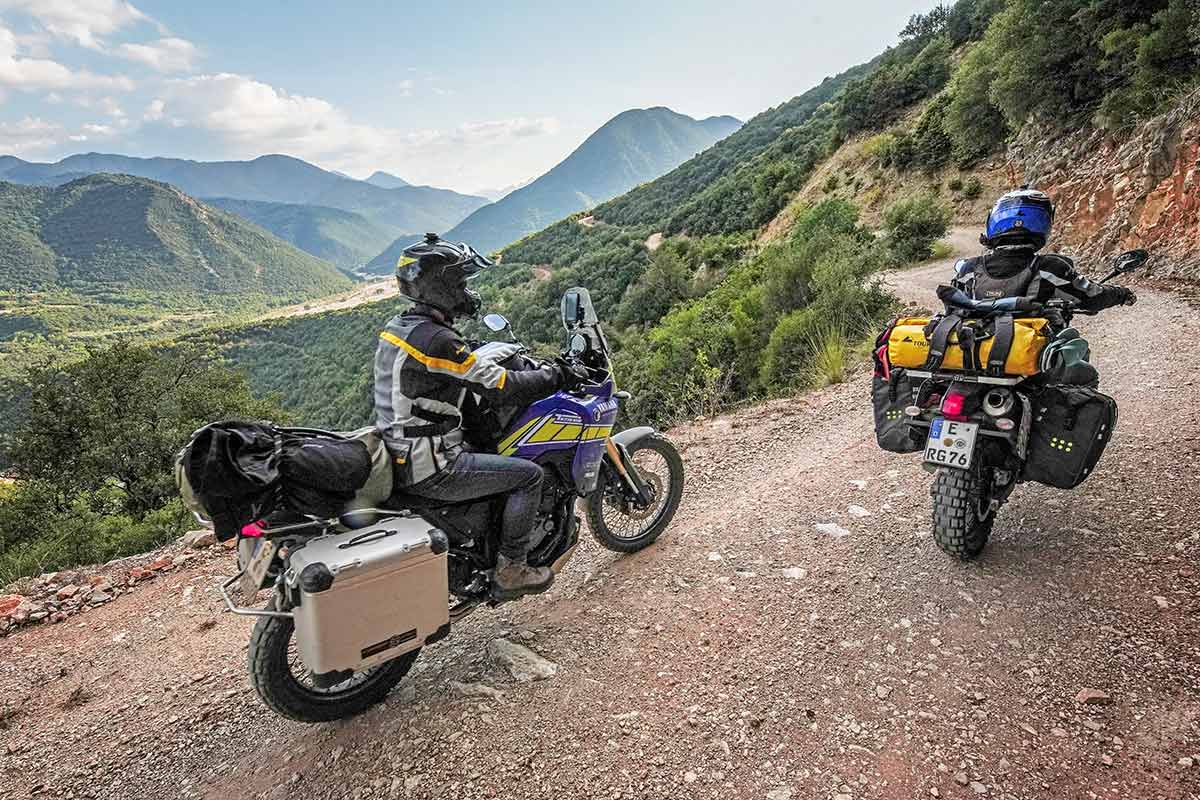
A narrow track leads to the historic stone bridge of Viniani.
It was one of those tips that you often get when you travel. There and there and there it's great! You absolutely have to go there! Experience teaches us that paradise for one person is something to be avoided for another. Of course, you politely let the tipsters finish, but in the end, you decide on completely different destinations. But this time we have to make an exception, because Sebastian could have laid it on thick when he spoke of the dream beach on Chalkidiki. But he didn't. He just said that the road there was only really demanding on the last 200 metres. And that was also the reason why practically no one went there. Except for him with his expedition land cruiser. And maybe Diana on the XT and me on the Ténéré. If we go that far east, that is.
Waves splash over the pristine white pebbles on the beach at Elia. The sun rises and sends a light breeze through the tent. I am alone. Where is Diana? I peek out of the tent and see her brushing her wet hair out of her eyes. Early morning swim. Glistening drops of water bead down from her skin like the slow motion of a warm summer rain. What reason could there be to leave this paradise? The oven temperatures at lunchtime, for example. So, let's head for the mountains!
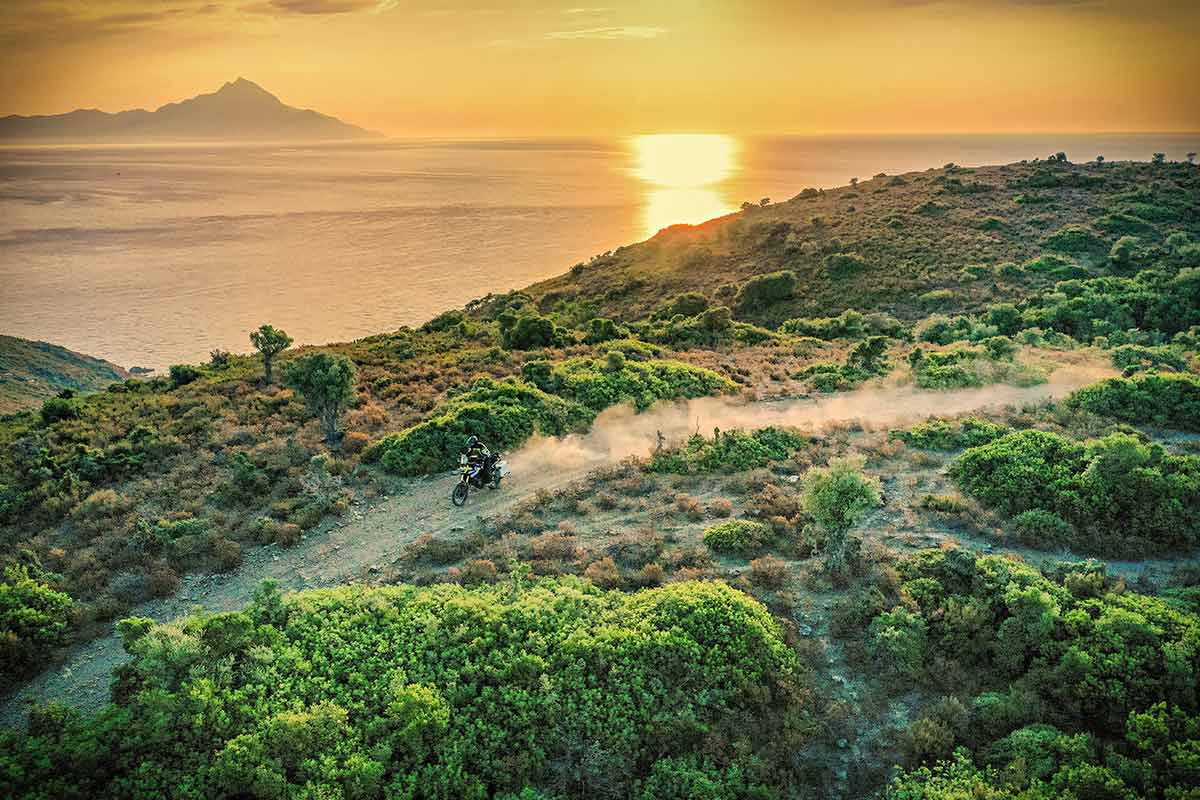
From the central peninsula of Chalkidiki you can see as far as the monk republic of Athos
The narrow band of the Voidomatis has dug deep into the earth's crust
Even though Hellas is mainly known for its beaches and islands, there is no shortage of mountains. 60 two-thousand-metre peaks alone stretch into the Greek sky. And the roads through the mountain maze seem to be there exclusively for us. Like the one to the Vikos Gorge. We circle the Yamahas through a rocky landscape where slabs of rock pile up on top of each other like pancakes. Until the sudden drop to the gorge puts an impressive end to it. The narrow band of the Voidomatis has dug deep into the earth's crust and rivals the iridescent turquoise Verdon in France.
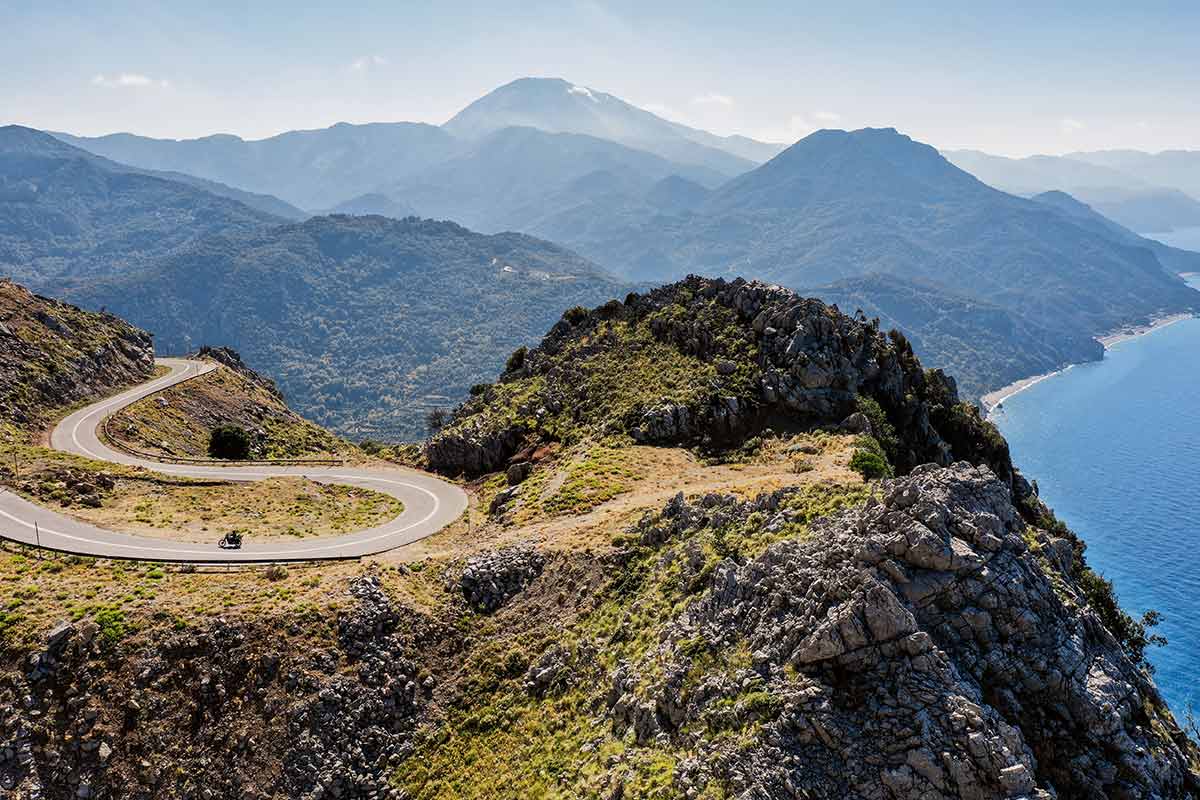
Surfing on Euboea's coastal road
We have just digested the brilliant view of the Vikos Gorge when we learn that there is a kind of rainy season here. From now on, every day shortly after noon, in dripping showers, the world ends. Two hours later, the sun grins back into our sights. We can return the grin. Not only because of the sun, but because of the following kilometres through the Pindos Mountains. Bend after bend for 150 kilometres. If any region claims the word curve paradise for itself, it has to compete with this route from the Vikos Gorge to Meteora. Four hours later we are completely exhausted, the concentration level grinding to the bottom. We urgently need a break from the euphoria.
A blaze of colour floods on us
The rocky outcrops in front of us come at just the right time. Almost no one knows the name of the rocks on which time gnaws. But the buildings on their narrow plateaus do: the Meteora monasteries. I have been here several times and have always enjoyed the epic scenery. But I never went inside the monasteries. Now it's time to take a closer look at their treasures, which are, after all, World Heritage Sites.
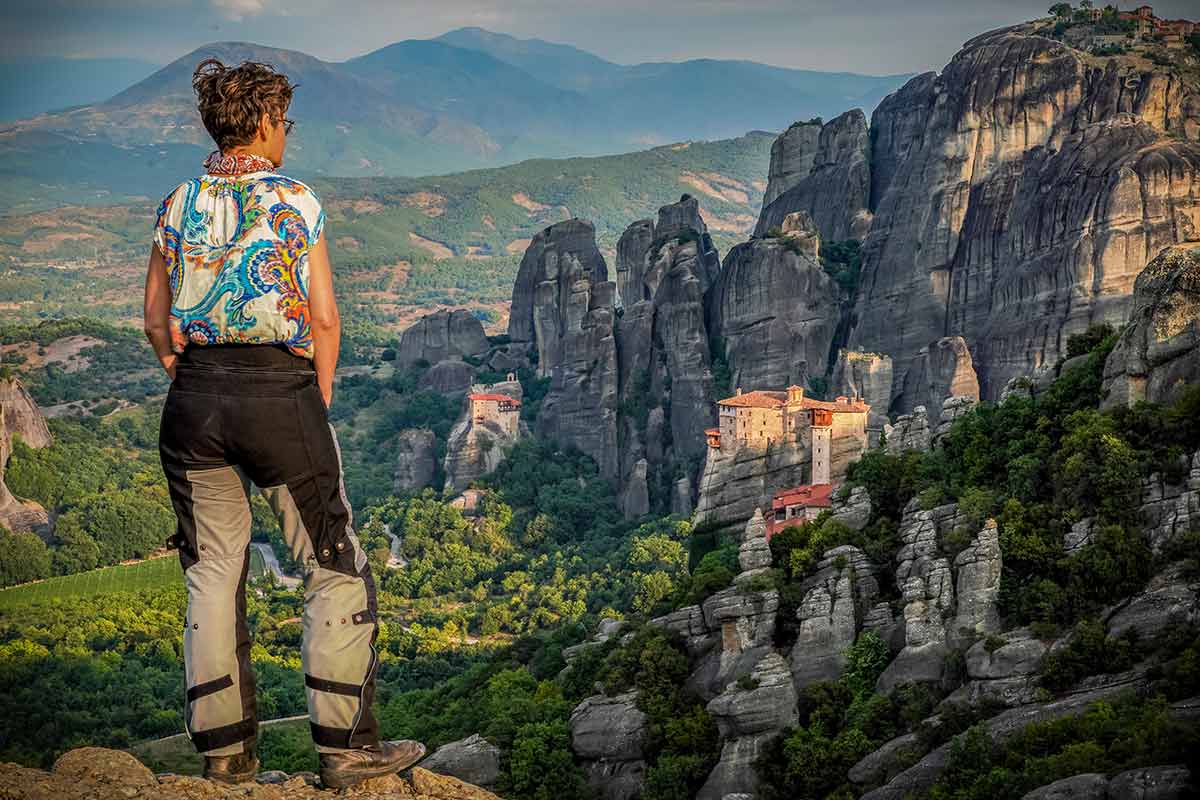
Always worth a visit: the Meteora monasteries
Immediately after entering the monasteries, a blaze of colour floods in. Stories of saints are comic-like but artfully and colourfully painted on metre-long walls. The dominant colours: Blue and red. The blue determines the background. The red belongs to the blood of the martyrs. They had a hard time back then. Someone constantly had to have their head cut off to acquire the status of a future saint. A gruelling job that has pretty much gone out of fashion. Today, it's not so easy to become a saint, but the living conditions are more acceptable. But I digress. Diana notices this immediately. And reminds me of the Landcruiser Sebastian tip.
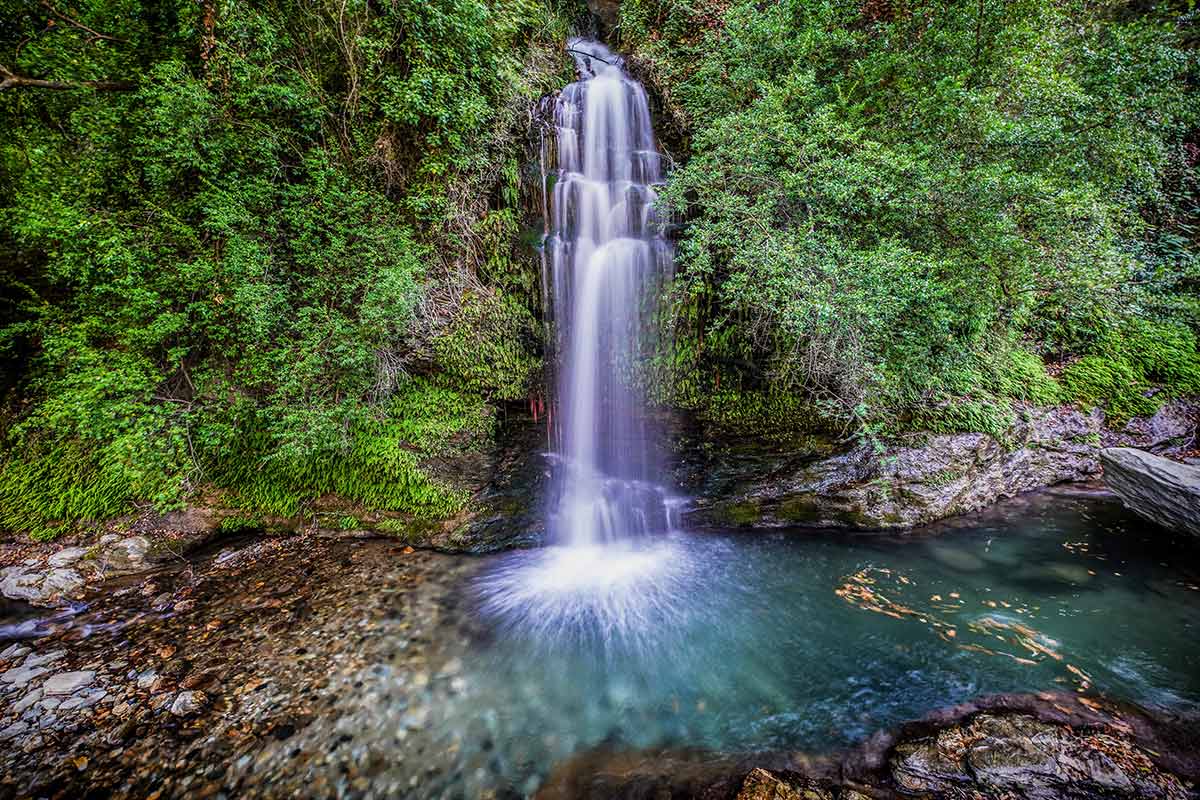
Refreshing: the Hiliadou waterfall
After three quarters of the way, we start to ponder
The three fingers of Halkidiki reach far into the Aegean. The peninsulas are for beach holiday people. Nothing for us. But one day at a beach, a dream beach, is something we can enjoy. Sebastian's directions were quite simple: drive along the middle finger of Chalkidiki to the southernmost point. And that's it. Including a few kilometres off-road. But after three quarters of the way we start to wonder. That's going to be steep! But the desire to reach the dream beach outweighs the sinking feeling. Until the next forced stop. That's even steeper! But down there it is, the Sebastian dream beach. And that's not all: a short peninsula with two beaches facing each other, two volleyball fields apart. Really great! But are we really going down there?
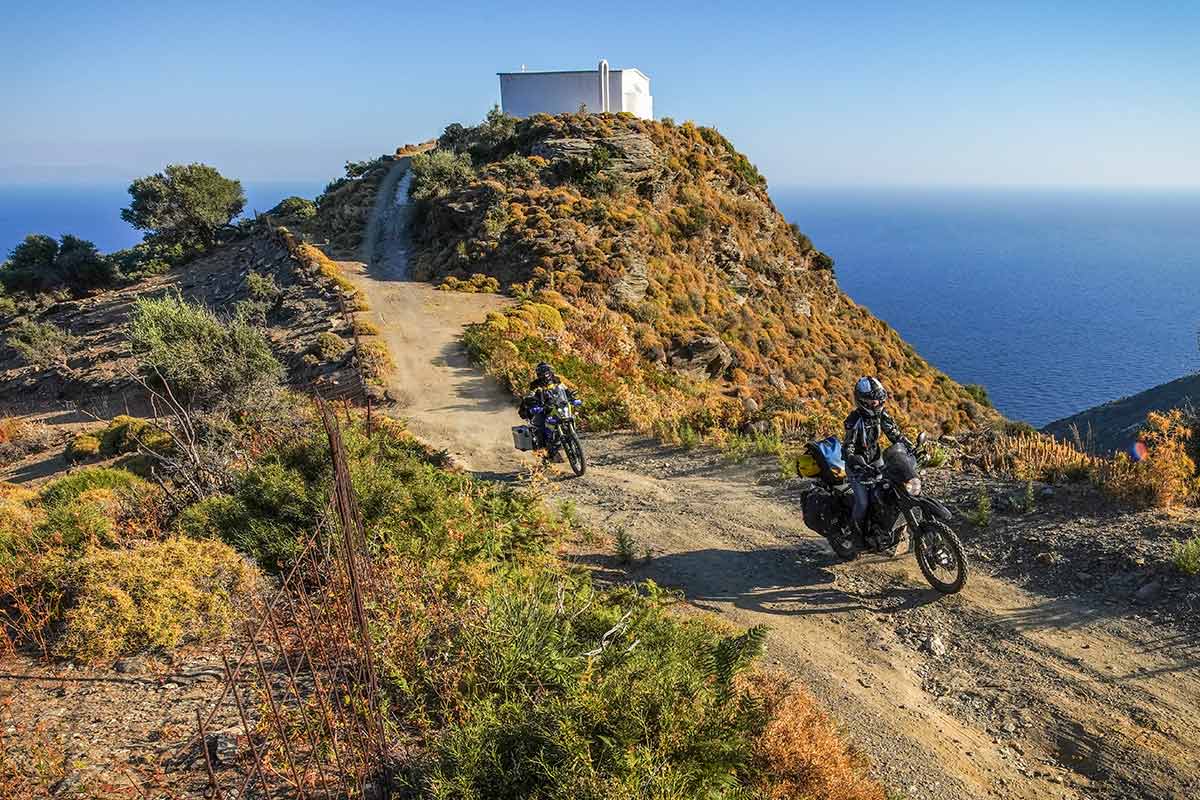
Good-natured slope at Cap Sarakiniko
It is at this point that I learn a new term: relief energy. This has nothing to do with esotericism, but, to put it flippantly, with slope or gradient. Unlike the two classical terms, the word "energy" tells me that it can also be associated with "Ouch!". And who wants to hurt themselves voluntarily? As though preparing to cross an Icelandic ford, we inspect the downhill course on foot. Going down could work. Somehow. But up again? Almost from a standing start, we would have to master the completely rutted, stony ascent. Could work on a good day, if we're lucky. But between us: are we on a rally or on holiday? Half an hour later, the tent is pitched above the double beach. As the sun sets, the Aegean blue on the double beach spills into the ocean blue of the sky. Thank you, Sebastian!
The Cappucino Freddo gets us back on our feet again
A wisp of cloud like a white beret is our landmark. It doesn't move from the spot. If it did, the summer sun would simply melt it away. But as it is, it is stuck on the almost 3,000-metre-high summit of Mount Olympus and makes the GPS superfluous for the next 250 kilometres. But orientation is not difficult anyway. As long as the sea is on the left, we cruise south. Only at the port of Volos do we have to make a decision. Left onto the peninsula or right towards Athens. No question about it. Left!
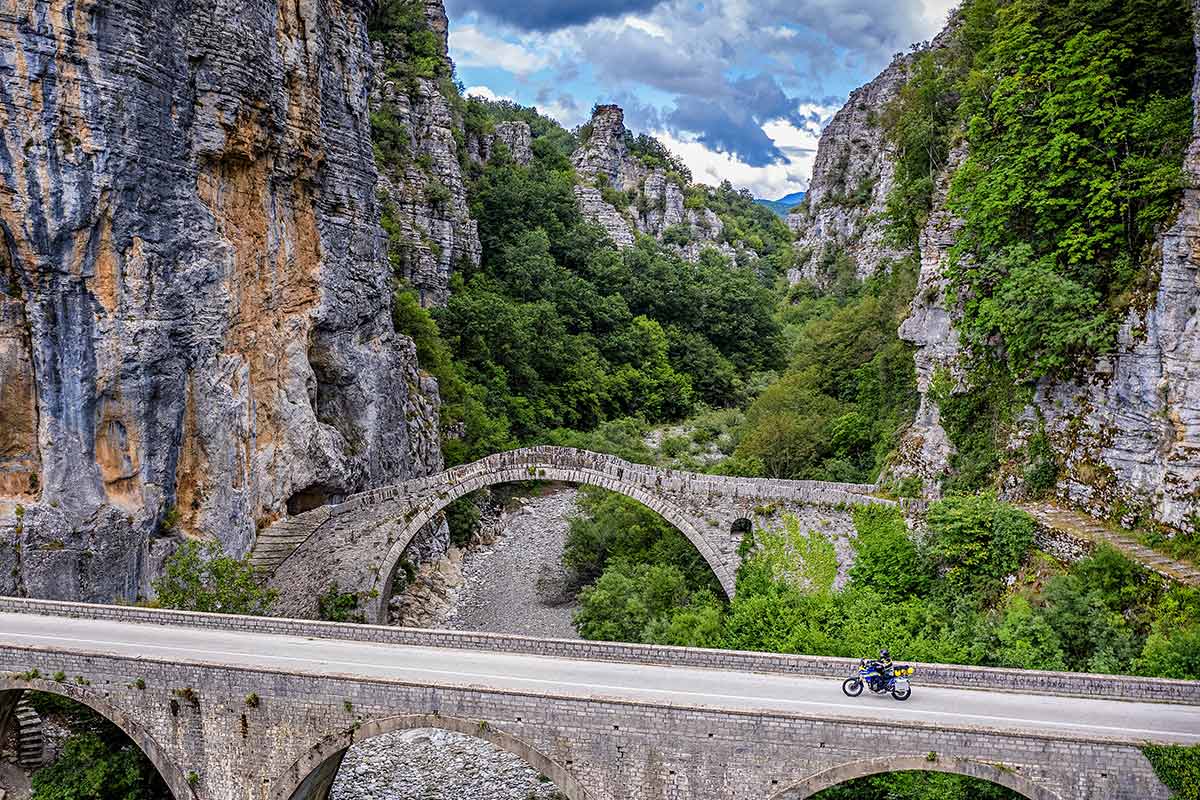
Gorge crossing at the Kokkorou bridge
A gravel road makes its way through dense olive groves. Diana drives the XT up the hill, wagging it, trying like me to avoid the “ouch!” of the relief energy. With only one ouch, we roll in between the red roofs of Drakia, a small village in the mountains of the Pilio peninsula. Coffee time! Vassilis' kafenio crouches under a huge plane tree. The dark-bearded lad is actually studying electrical engineering in Athens, but is always here in the summer months when there are no lectures, serving one of the best cappucino freddo in Greece. The iced coffee-milk mix gets us back on our feet and then on our bikes. Where to? The Pilio peninsula is still long.
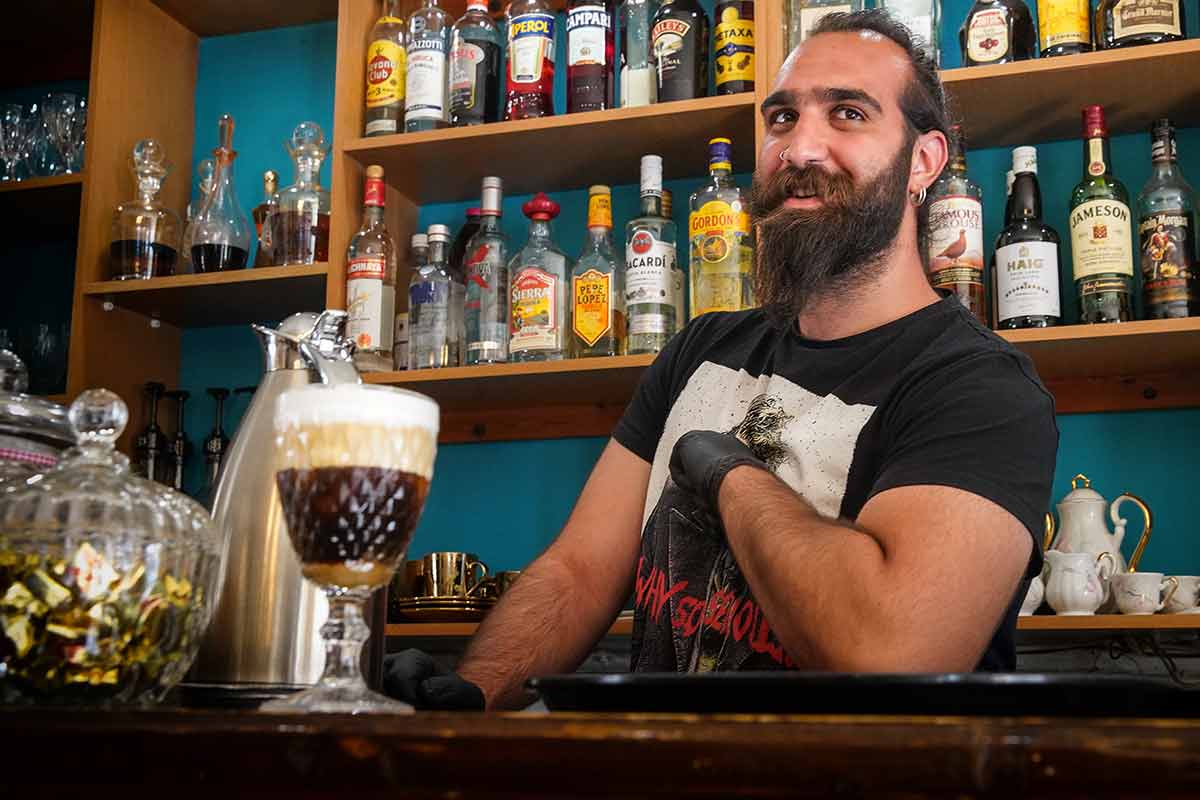
Perfect cappuccino Freddo at the Metaxogeni taverna in Drakia
Of course, a peninsula is a dead end. But many dead ends are worthwhile. Like this one. At the southern end, fishing boats slosh in front of the pier of Agia Kyriaki. Squid dry in the sun. Freshly caught bream is brought to the kitchens of the small restaurants. Children's laughter echoes from centuries-old cobblestones. The sea winks between the sun-white walls of the cubic houses. Across the water, the mountains of Euboea, Greece's second largest island, can already be seen. That's where we're going tomorrow. Maybe. Or the day after tomorrow. We still have time left. Are we still in time at all? In our time? Or already outside?
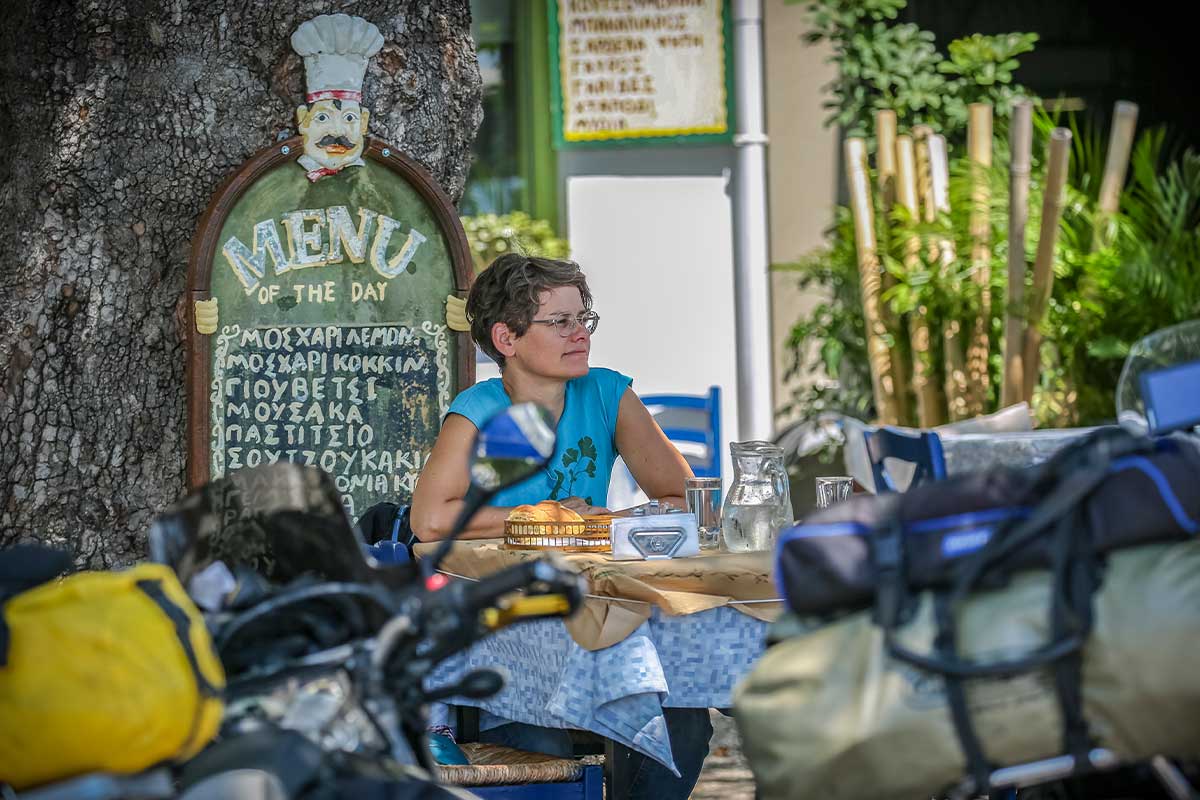
The Yamahas crackle the heat of the day out of their ribs. The tent is close to the water. Warm wind strokes the face like an old friend. The blue hour nestles over the horizon, and the noisy rhythm of the waves ebbs to a soft murmur. The earth exhales.
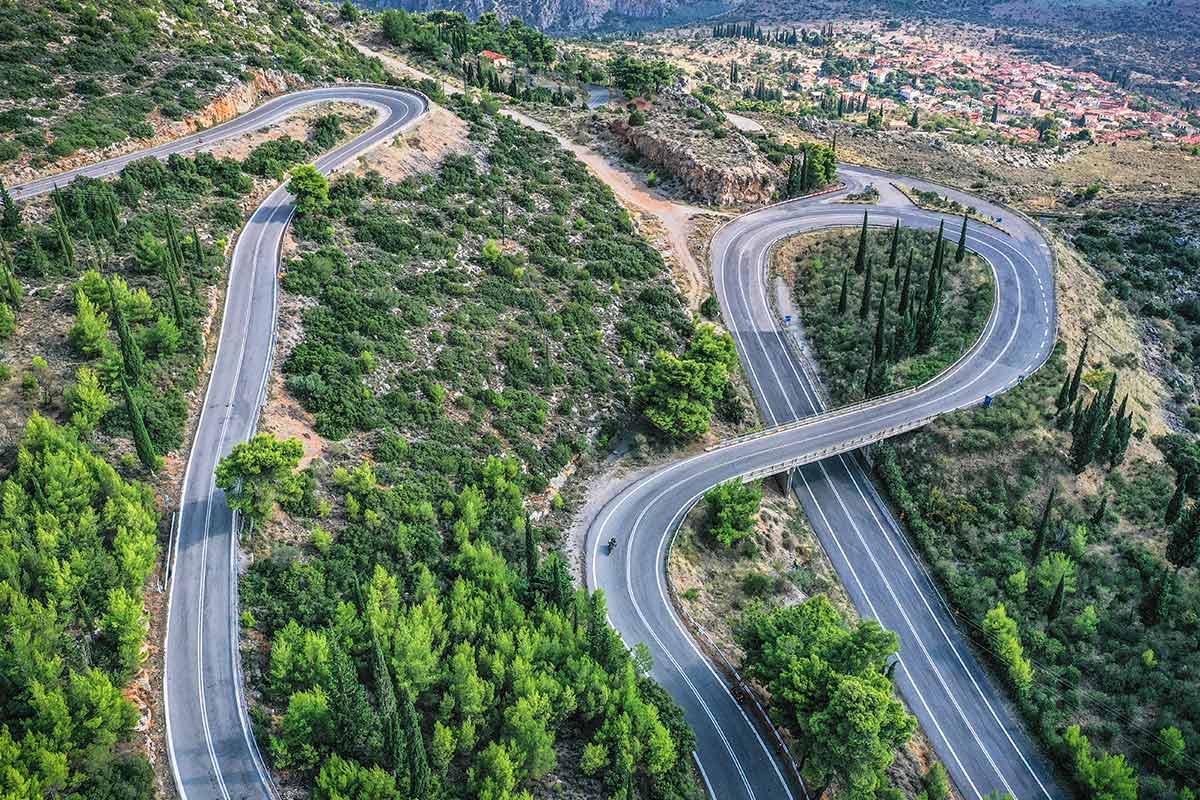
Arrival
There are two ways to get here: overland through the Balkans or by ferry from Italy. The overland journey from Munich to the starting point in Igoumenitsa is just under 1900 kilometres. By ferry it is easier to get there from the ports of Venice (approx. 500 km from Munich), Ancona (770 km), Bari (1200 km) and Brindisi (1330 km). From Venice, the cheapest crossing per person with motorbike costs 140 euros, from Ancona 108 euros. More at www.superfast.com or www.minoan.gr.
Travel time
From late autumn to early spring, you can expect plenty of rain in northern Greece and even snow at higher altitudes. Late spring and early autumn are perfect. We were on the road in high summer. In the coastal lowlands, the temperatures hover around 35°C. The mountain regions promise refreshing cooling.
The route
Greece's main transport network is in relatively good condition. On side tracks, cutbacks have to be made. There is also an extensive network of gravel roads. The Greek interior is very mountainous, so the routes are often very winding. This should be taken into account when calculating the route.
Accommodation
Many campsites and small hotels add to the charm of a trip through Greece. We found the accommodation at the Tritoxo guesthouse in Kokouli at the southern end of the Vikos Gorge particularly charming. Double room from 65 euros upwards, www.tritoxo.gr/en
In Delphi, you have a wonderful view of the Gulf of Corinth from the Apollon campsite. Pitch from 20 euros, www.apolloncamping.gr
Activities
Of the many sights in Greece, we liked the historical complex in Delphi and the Meteora monasteries best. As is so often the case, it is advisable to visit early in the morning to enjoy the ambience in peace.
Mount Olympus is highly regarded by nature lovers. Climbing it is worth a try, but not a piece of cake. In the summit region, you have to be prepared for falling rocks and fast-changing weather.
ACT Greece
A great way to experience Greece on secluded trails is the Adventure Country Track Greece. The carefully scouted route avoids main traffic routes and leads through the most beautiful regions of the country with a share of unpaved roads of about 30 percent. Info can be found at https://adventurecountrytracks.com


